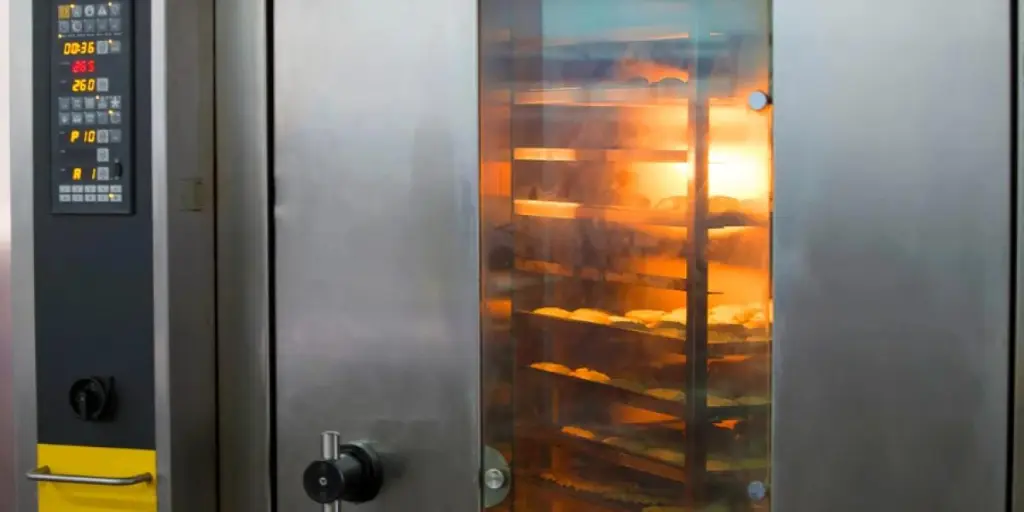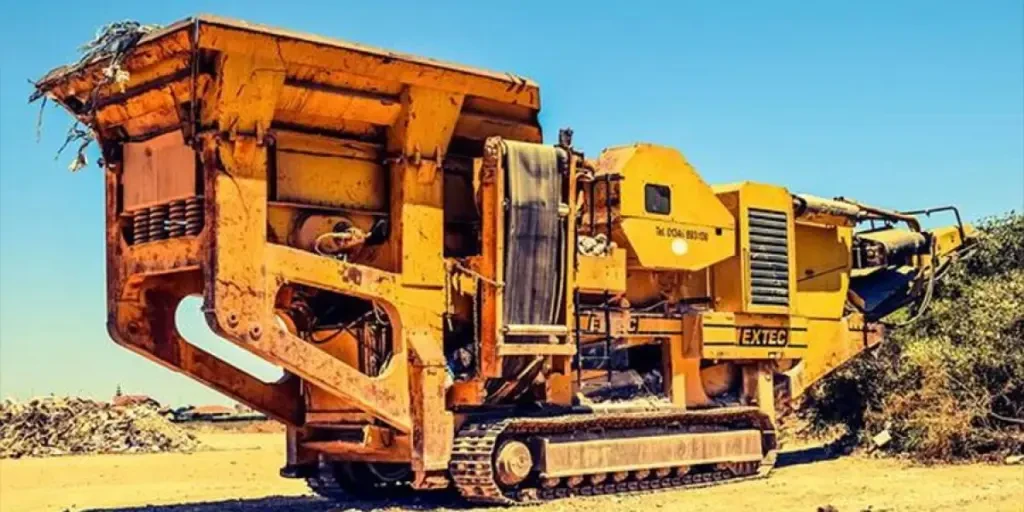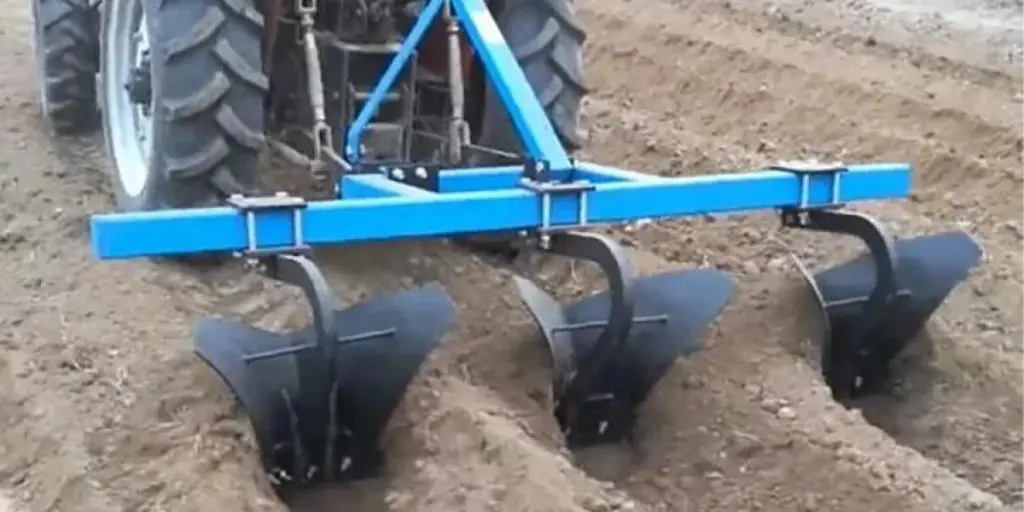Looking to upgrade your commercial kitchen? One of the most important pieces of equipment you’ll need is a high-quality commercial oven. These ovens are built to handle the high volume and fast pace of a commercial kitchen and can make all the difference when it comes to producing delicious meals for your customers.
But with so many different types and models of commercial ovens on the market, how do you know which one is the right fit for your business? This article will cover the common types of commercial ovens and the top 10 tips to keep in mind when selecting your next equipment.
Table of Contents
Commercial ovens market outlook and driving factors
Types of commercial ovens
What to look for when selecting a commercial oven?
Final word
Commercial ovens market outlook and driving factors
The global sales of commercial ovens are expected to cross a high of about US$1,635.5 million, exhibiting a CAGR of 4.7% between 2023 and 2033. This growth is attributed to an increase in consumption of affordable and nutritional bakery products, a surging population of working individuals with disposable income, continued changes in living standards, reduced cooking times, enhanced efficiency, and cost savings.
Asia Pacific is expected to witness significant growth in the commercial oven market due to the rapidly growing food service industry in the region. In addition, the increasing adoption of commercial ovens in various end-use industries such as hotels, restaurants, and bakeries is also expected to drive the market in the region.
Types of commercial ovens
Convection ovens
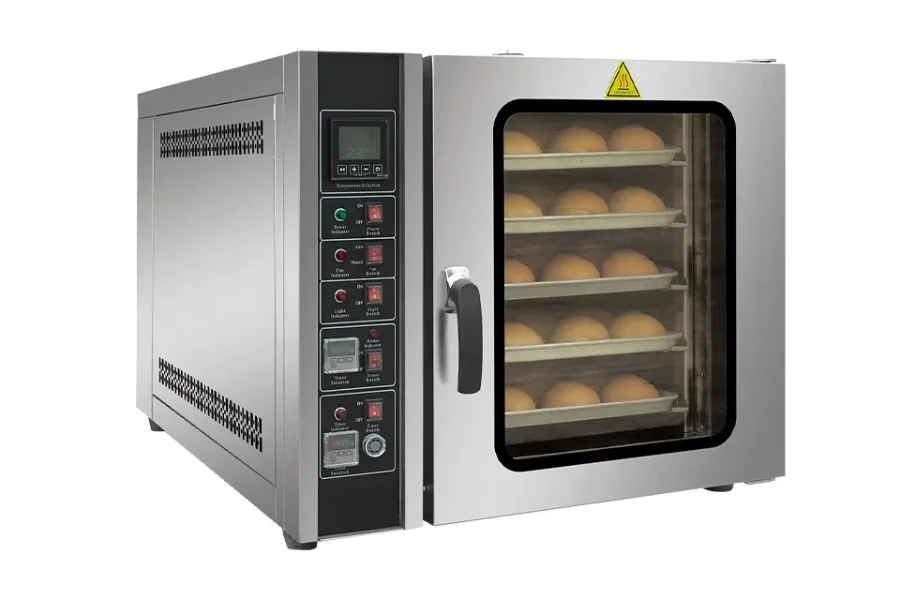
A convection oven uses a fan and an exhaust system to circulate hot air over and around the food, creating a faster and more even cooking process.
Key features
– A fan that circulates hot air around the food
– An exhaust system for removing moisture from the oven
– Multiple racks that allow multiple dishes at a go
– Digital controls, timer, and temperature settings for precise cooking
Pros
– Faster cooking times at lower temperatures
– More even cooking and browning, especially for roasts
– Versatility; can broil, roast, bake, and more
– Energy efficiency
– Allows for baking multiple sheets of cookies simultaneously
– Beneficial for frequent use
Cons
– $100 to $200 more expensive than a stove
– Fan noise can be loud sometimes
– Limited size
– Possible drying out of food
Combi ovens

Combi ovens combine the functionality of a convection oven, steam oven, and/or microwave to offer various cooking options in one appliance.
Features of combi ovens
– Combination of convection, steam, and sometimes smoker functionality
– Various cooking modes for different foods and cooking methods
– Programmable settings and automatic cooking cycles
– Multiple cooking racks
– Digital controls with temperature and humidity sensors
Pros
– Versatile cooking options
– Faster cooking times
– More consistent and even cooking
– Energy efficiency
– Reduces food shrinkage and retains nutrients
– Improved food quality and taste
– Time-saving with programmable settings and automatic cycles
Cons
– Higher initial cost compared to conventional ovens
– More complicated operation and maintenance
– Requires a dedicated water supply and drain for steam functionality
– Large sizes may not fit in all kitchens or cooking spaces
– Additional training may be required to use all the features effectively
Pizza ovens
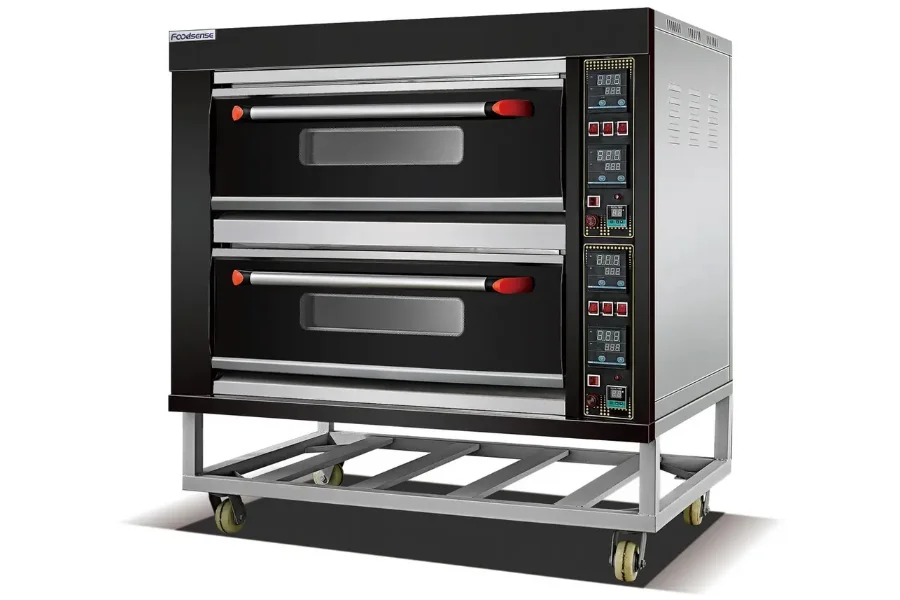
These ovens are specialized ovens designed for cooking pizza at high temperatures, typically using wood, gas, or electricity as a fuel source.
Features
– High heat capacity to reach temperatures over 800°F (427°C)
– Dome-shaped interior design that helps distribute heat evenly
– Stone or brick surface for cooking, which absorbs moisture and produces a crispy crust
– Often smaller in size compared to regular ovens, making them suitable for home use
Pros
– Quick cooking time, crispy crust, and moist toppings
– Can cook other dishes, such as vegetables, bread, and meat
– Energy efficiency, quick heating, and less cooking time
Cons
– Limited functionality for cooking purposes
– Expensive to purchase and install
– Limited cooking space for larger dishes and multiple pizzas
– Stone or brick surface requires regular maintenance to prevent damage
Rotisserie ovens
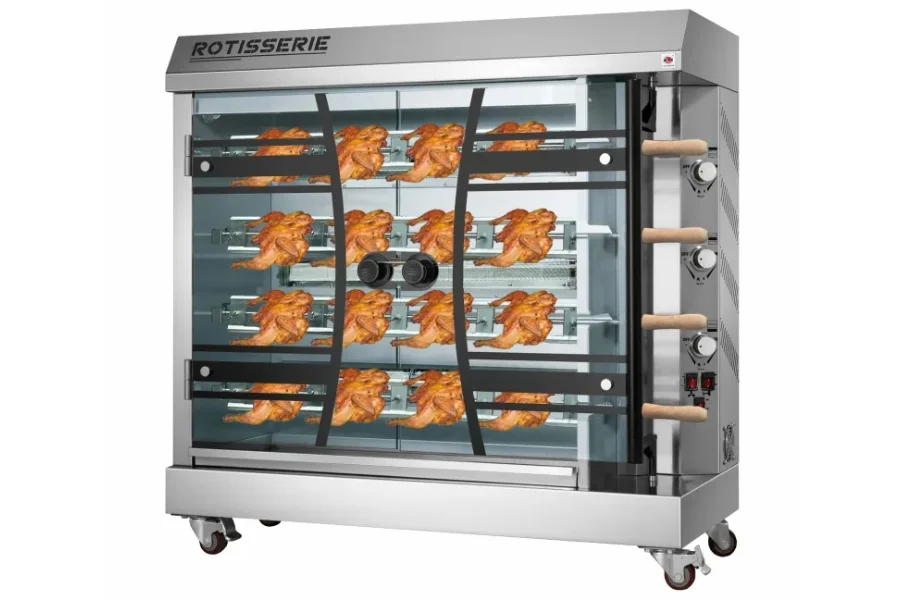
Rotisserie ovens rotate food on a spit to cook it evenly, resulting in a juicy and flavorful roasted dish.
Features
– Rotating spit for even cooking
– Adjustable heat settings to cook a variety of meats
– Drip tray to catch excess grease and prevent mess
– Glass door for easy monitoring of the cooking process
– Multiple cooking racks for cooking multiple items at once
Pros
– Cooks meat evenly making it crispy on the outside and tender inside
– Can cook a variety of meats, including chicken, beef, pork, and even fish
– Easy to use with simple controls and a user-friendly interface
– Removes excess grease, making it a healthier way to cook meat
– Cooks meat faster than conventional ovens
Cons
– Limited functionality
– Requires a lot of counter or storage space
– High-quality rotisserie ovens can be expensive
– Needs more cleaning and maintenance
Microwave ovens
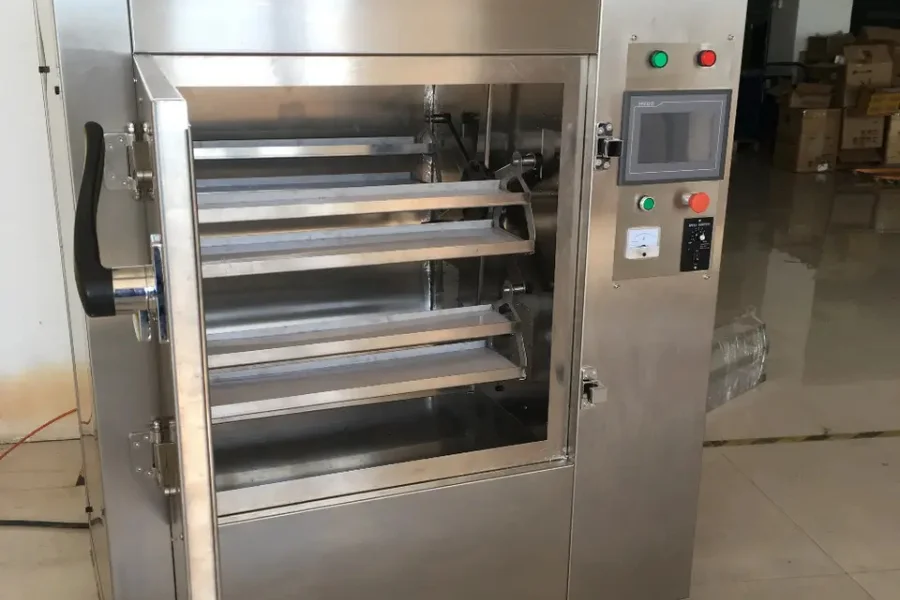
Microwave ovens are electronic kitchen appliances that use microwave radiation to cook, reheat, or defrost food quickly and efficiently.
Features
– Cooking modes (defrost, reheat, cook)
– Timer and clock functions
– Power settings (low, medium, high)
– A turntable or rotating plate
– Sensor cooking technology
– Child safety lock
– Built-in lighting
Pros
– Quick and convenient cooking
– Time and energy saving compared to traditional cooking methods
– Easy to clean and maintain
– Versatile cooking options, such as defrosting, reheating, and cooking
– Ideal for small kitchens or spaces with limited cooking options
Cons
– Can result in uneven heating and cooking
– May not be suitable for certain types of cooking, such as baking or grilling
– Some models can be noisy during operation
– May emit harmful radiation if not properly maintained or used incorrectly
– Can be limited in terms of the size
What to look for when selecting a commercial oven?
Power type
The power type of a commercial oven determines how the oven operates and what type of food it can cook efficiently.
For example, a gas oven is ideal for high-volume cooking, while an electric oven is better for low-volume cooking and precise temperature control. The power type can also affect the cost of operating the oven and its environmental impact.
Extraction
Extraction helps remove smoke, steam, and excess heat from the kitchen, creating a safe and comfortable working environment. Without proper extraction, the accumulation of smoke and heat can cause discomfort for kitchen staff and potentially lead to safety hazards, such as fire or poor air quality.
Plumbing and water
Many commercial ovens require water for purposes such as steam cooking, cleaning, and cooling. Adequate plumbing and water supply are necessary to ensure the proper functioning of the oven and to maintain a hygienic kitchen environment.
Additionally, some commercial ovens may have specific plumbing and water requirements that need to be considered when selecting and installing the oven.
Oven racks
The number and adjustability of oven racks can affect the cooking capacity and flexibility of the oven.
The specific needs of your business will determine the size and spacing of the racks, the material they are made of, and their weight capacity.
You should select an oven with sturdy and adjustable racks to maximize cooking capacity and flexibility, depending on the volume and types of dishes to be cooked.
Bakery trays
If you’re looking for a bakery tray for your commercial oven, it’s important to consider how the tray will affect your baking capacity and the quality of your baked goods.
Perforated aluminum trays are a great option to consider. These trays are durable, lightweight, and conduct heat well, resulting in even baking and a crispy crust. With their efficient heat conductivity and the ability to circulate air around baked foods, these trays are ideal for producing a variety of baked goods.
Oven racks lift
When selecting a commercial oven, it’s essential to consider the lift of the oven racks because it can impact how easy it is to load and unload the oven. You want to be able to move racks in and out of the oven with ease, especially if you’re dealing with large or heavy items.
An ideal commercial oven would have adjustable racks with easy lift systems, like a rack lift that you can operate with one hand or a rack guide system that keeps the racks level and is simple to move. It’s also helpful to have multiple rack positions to cook different items simultaneously while ensuring even heating and cooking.
Food grade grease
Food grade grease meets specific standards for food safety and ensures that your food is not contaminated during the cooking process. You should ensure the following food grade grease features in your commercial oven:
– NSF certification
– High-temperature performance
– Water-resistant
– Food-safe ingredients
– Non-toxic and odorless
Ventilation
Ventilation is crucial when selecting a commercial oven; it ensures that heat and smoke are properly removed from the cooking area. Without proper ventilation, the oven can produce excessive heat, making the kitchen uncomfortable and potentially hazardous to work in.
You should consider an oven with a built-in ventilation system that effectively removes smoke, heat, and odors. It should be easy to clean and have a powerful exhaust fan, air ducts, and filters to easily capture grease and other pollutants.
Timers (manual/programmable)
Timers (manual/programmable) are crucial for ensuring the quality and consistency of your baked goods. An ideal timer should have features such as:
– Easy-to-use interface
– Multiple timer settings
– Programmable settings
– Loud and clear alarms
– Automatic shut-off
Doors (solid/glass)
A solid door can provide better insulation and heat retention, while a glass door allows for better visibility of the food being cooked. Depending on your specific needs, one type of door may be more beneficial than the other.
Final word
Selecting the right commercial oven is crucial for ensuring efficiency and quality in the kitchen. To find an oven that meets your needs, always consider factors such as size, type, power source, and features. Investing in a high-quality and durable oven that can withstand the demands of a commercial kitchen is also important for reliable performance and success in your business.
